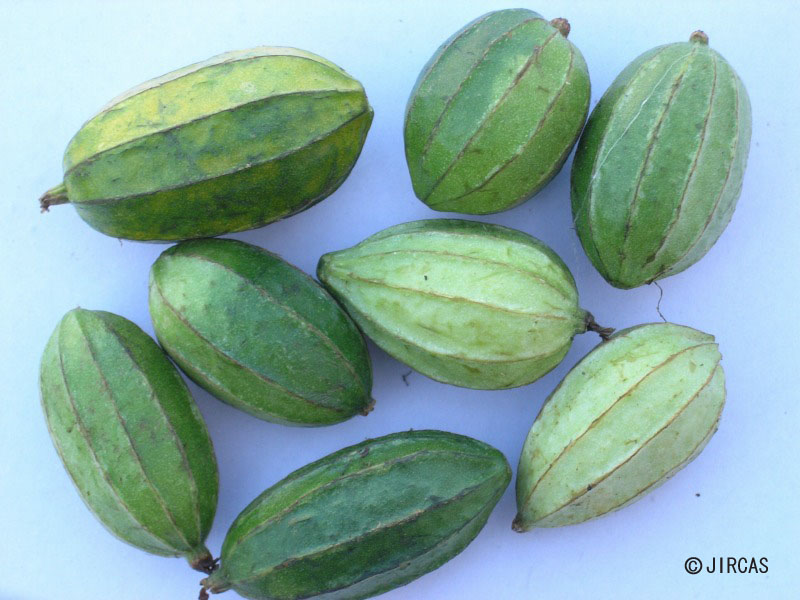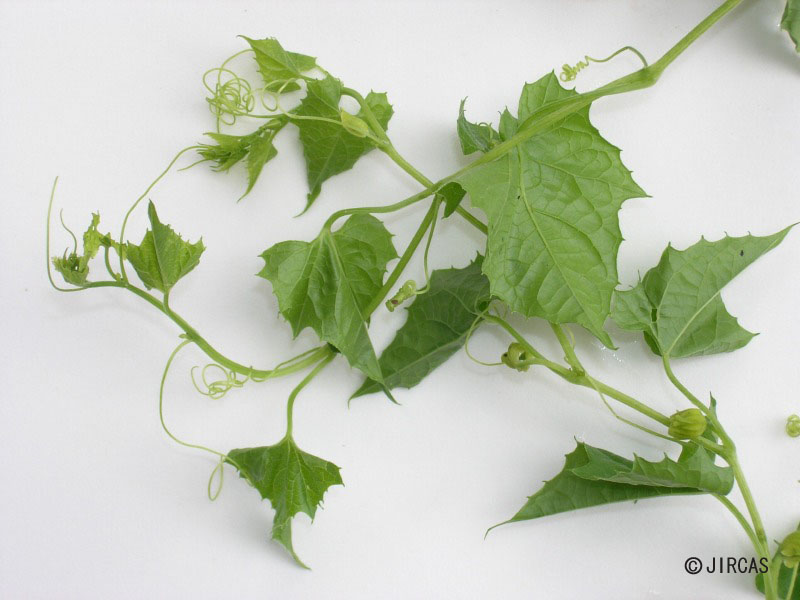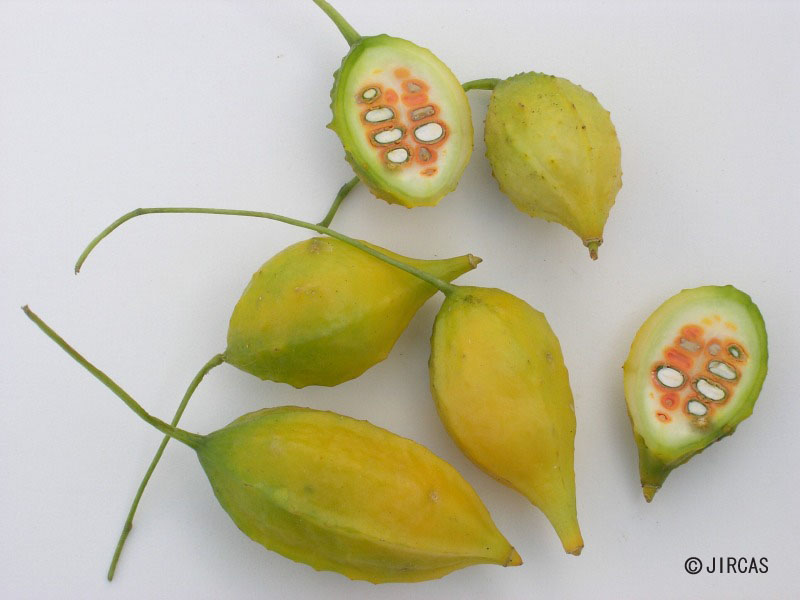Momordica subangulata (Cucurbitaceae)
- Scientific name
- Momordica subangulata
- Family name
- Cucurbitaceae
- Common name
- Wild bitter gourd (English)
- Local name
- Phak mae, phak hai
Dioecious, perennial climber, with annual aerial stem. Stem angular. Tendrils unbranched, short. Leaves simple, palmately lobed 3–5, thin, veins 3–5; petiole up to 5 cm long; blade ovate-reniform, 6–13 × 4–9 cm, base cordate, margins denticulate. Flowers solitary in leaf axils, yellow, up to 5 cm in diameter. Male flowers up to 12 cm long, with long peduncle, subtended with apical, reniform bract, c. 2 cm long; pedicel short, c. 2.5 mm long. Calyx tubular, 5-lobed, lobe ovate, apex emarginate. Corolla 5, petals free; stamens 3. Female flowers solitary, peduncle 6–7 cm long, bearing small bract at base, perianth the same as in male flower. Ovary superior, 3-carpellate, stigma 3-lobed. Fruit a peppo, ovoid, 6–7 × 3–4 cm, longitudinally winged. Seeds 1 × 1 × 0.5 cm, grey.
Common vine in wastelands and along forest margins in northern and southern Thailand. Propagated by seed sowing. Growing plant must be supported by a firm stake.
Young fruits and shoots occasionally sold in local markets. They are cooked in curries, or steamed or boiled and eaten with nam phrik (dipping sauces).
Young fruits and shoots occasionally sold in local markets. They are cooked in curries, or steamed or boiled and eaten with nam phrik (dipping sauces).






